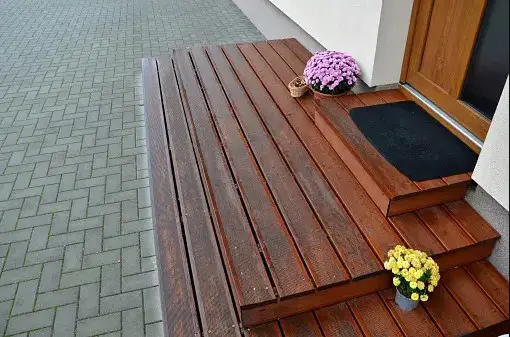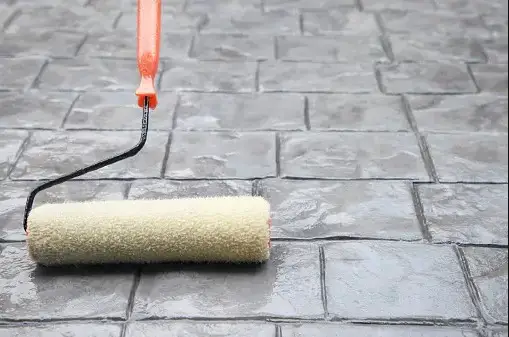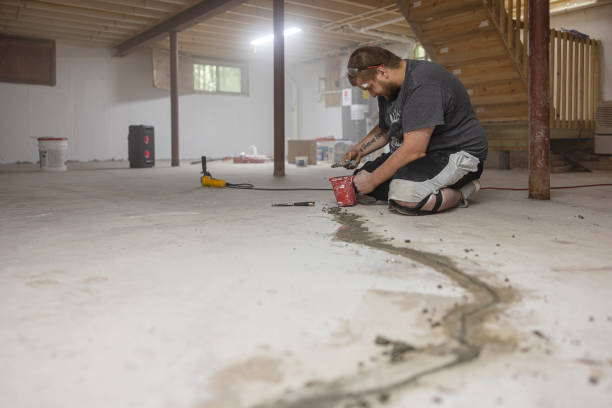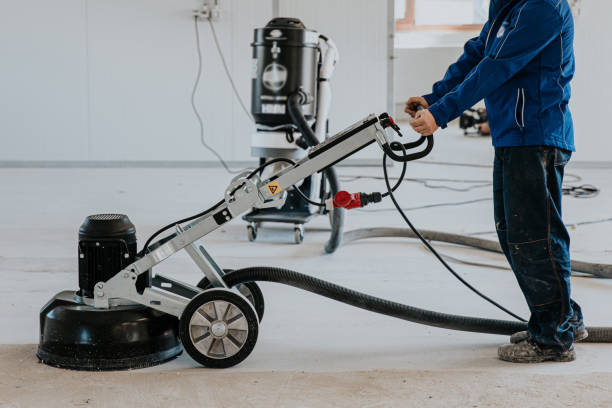Maintaining and caring for polished concrete floors is essential to preserve their appearance, durability, and longevity. Regular maintenance not only enhances the aesthetics but also ensures that the floor continues to withstand daily wear and tear. In this article, we will explore effective maintenance and care tips to keep your polished concrete floors in pristine condition.
General Cleaning Tips
Keeping your polished concrete floors clean is the first step towards proper maintenance. Follow these tips to maintain their shine and cleanliness:
- Sweeping and Dusting: Regularly sweep or dust the floor using a soft-bristle broom or dust mop. This helps remove loose dirt, debris, and dust particles that can cause scratches.
- Mopping with pH-Neutral Cleaners: Use a pH-neutral cleaner specifically designed for polished concrete floors. Dilute the cleaner according to the
- manufacturer's instructions and mop the floor gently. Rinse thoroughly with clean water to remove any residue.
- Promptly Removing Spills and Stains: Accidental spills should be cleaned immediately to prevent stains from setting in. Blot the spill with a clean cloth or paper towel, and then clean the area with a mild detergent or cleaner.
Preventive Measures
Taking proactive steps to prevent damage can significantly extend the life of your polished concrete floors. Here are some preventive measures to consider:
- Placing Doormats at Entrances: Use doormats at all entry points to trap dirt, grit, and moisture. This helps minimise the amount of debris brought onto the floor, reducing the risk of scratches and abrasions.
- Using Protective Pads under Furniture: Attach felt or rubber pads to the legs of furniture to prevent scratches and marks when moving or rearranging items. Avoid dragging heavy furniture across the floor to prevent damage.
- Avoiding Abrasive Materials or Tools: Refrain from using abrasive cleaning tools or harsh chemicals on polished concrete floors, as they can degrade the surface and cause scratches. Opt for soft mops, microfiber cloths, or non-abrasive cleaning pads instead.
Regular Maintenance Routine
Establishing a regular maintenance routine is crucial for the upkeep of your polished concrete floors. Consider the following tasks:
- Daily Cleaning Practices: Perform daily sweeping or dusting to remove loose dirt and debris. This prevents them from being ground into the floor and causing scratches over time.
- Weekly Maintenance Tasks: In addition to daily cleaning, perform a weekly damp mopping using a pH-neutral cleaner. This helps maintain the floor's shine and cleanliness.
- Monthly or Quarterly Maintenance Activities: Periodically deep clean the floor using a specialised polished concrete cleaner. Follow the manufacturer's instructions for dilution ratios and application methods. This thorough cleaning removes any stubborn stains or residue that may have accumulated.
Dealing with Stains and Spills
Despite preventive measures, stains and spills can still occur on polished concrete floors. Follow these steps to effectively address them:
- Identifying Common Types of Stains: Different stains require specific cleaning methods. Common types include oil-based stains, food and beverage stains, and organic stains. Identify the stain type before proceeding with the appropriate cleaning approach.
- Proper Stain Removal Techniques: For oil-based stains, use an absorbent material like baking soda or kitty litter to soak up the excess oil. Then, clean the area with a mild degreaser or a specialised stain remover designed for polished concrete floors.
- Dealing with Stubborn or Deep Stains: For stubborn or deep stains, consider using a poultice or a professional-grade stain remover. Apply the poultice or stain remover to the affected area, following the manufacturer's instructions. Allow it to sit for the recommended time, and then clean the area thoroughly.
Polishing and Refinishing
Regular polishing and refinishing are essential for maintaining the lustre and durability of polished concrete floors. Follow these guidelines:
- Understanding the Need for Periodic Polishing: Over time, foot traffic and normal wear can diminish the shine of polished concrete floors. Periodic polishing helps restore the glossy appearance. Determine the ideal frequency of polishing based on the level of usage and wear.
- Steps Involved in the Polishing Process: The polishing process typically involves grinding the surface with progressively finer diamond abrasives. This removes any imperfections and reveals a smooth, reflective surface. Consult with a professional concrete polishing service for best results.
- Frequency of Refinishing: The frequency of refinishing depends on the level of foot traffic and wear. Lightly trafficked areas may require refinishing every few years, while high-traffic commercial spaces might need more frequent refinishing. Monitor the condition of the floor and consult professionals for recommendations.
Sealant and Coating Maintenance
Sealants and coatings play a vital role in protecting polished concrete floors. Here's how to maintain them effectively:
- Importance of Sealants and Coatings: Sealants act as a protective barrier against stains, moisture, and chemicals. Coatings, such as epoxy or polyurethane, enhance the floor's durability and provide additional resistance to abrasions. Regular maintenance of these coatings is crucial.
- Inspecting and Reapplying Sealants: Periodically inspect the sealant layer for signs of wear or damage. If you notice areas where the sealant has worn off, it's important to reapply it promptly. Consult with professionals to determine the appropriate sealant and application method.
- Protecting the Floor from UV Damage: If your polished concrete floor is exposed to direct sunlight, consider using UV-resistant sealants or coatings. This helps prevent discoloration and fading caused by prolonged sun exposure.
Repairing Damages
In the event of cracks, chips, or other damages, prompt repair is essential. Follow these steps to address common issues:
- Identifying Common Types of Damages: Inspect the floor regularly for cracks, chips, or other visible damages. Identify the extent and type of damage to determine the appropriate repair method.
- Repairing Cracks and Chips: Small cracks or chips can be repaired using specialised concrete repair products. Clean the damaged area thoroughly, apply the repair material according to the manufacturer's instructions, and allow it to cure properly.
- Resurfacing Options for Extensive Damages: In cases of extensive damage or deterioration, resurfacing the floor may be necessary. Consult with professionals to assess the condition of the floor and determine the best resurfacing technique.
Special Considerations for Outdoor Polished Concrete
Outdoor polished concrete floors require specific care due to exposure to the elements. Here are some considerations:
- Regular Cleaning: Outdoor polished concrete should be regularly swept or hosed down to remove dirt, leaves, and other debris. Avoid using abrasive cleaning tools that could scratch the surface.
- Stain Prevention: Apply a penetrating sealer designed for outdoor use to protect the polished concrete from stains caused by spills or organic matter. Ensure the sealer is compatible with the specific environmental conditions.
- Snow and Ice Removal: During winter months, avoid using de-icing chemicals that could damage the surface. Instead, use non-abrasive methods, such as shovelling or using ice melt products specifically formulated for polished concrete.
Additional Tips and Best Practices
Consider these additional tips and best practices to maintain polished concrete floors:
- Using the Correct Cleaning Tools and Equipment: Use soft-bristle brooms, microfiber mops, or non-abrasive cleaning pads to avoid scratching the floor surface.
- Avoiding Harsh Chemicals or Cleaners: Harsh chemicals can degrade the surface of polished concrete floors. Stick to pH-neutral cleaners recommended for polished concrete to prevent damage.
- Seeking Professional Assistance When Needed: If you're unsure about any maintenance or repair tasks, or if you encounter significant issues, consult professionals experienced in polished concrete floor maintenance. They can provide expert advice and ensure proper care.
Proper maintenance and care are vital for preserving the beauty and durability of polished concrete floors. By following these tips, you can maintain the shine, cleanliness, and longevity of your floors.
Remember to establish a regular maintenance routine, address stains and spills promptly, and consider the specific requirements of outdoor polished concrete. With consistent care, your polished concrete floors will continue to impress with their sleek and stylish appearance for years to come.










